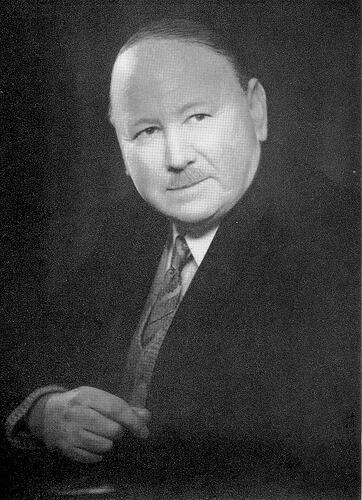'He was a typical John Bull Englishman, who stood on his own feet and was at times intolerant of lesser people. Always he was on a fresh adventure to discover the beauties of nature, intoxicating him with their marvellous design and purpose, the Mystery of the Great Power who directed it all, so filling him with a deep reverence and religion that was greater than orthodox needs' (Young, 1967).
When he was a young man, Tarlton stayed with an Uncle in India. It was then, 23 January 1951, that he met Vuswanathan of Teynampet, Madras; a disciple of Mahatma Gandhi an Indian naturalist who spoke about the giant savage bees that can be found in some Indian Temples. Even as a child Tarlton Rayment had an interest in bees, though he showed some talent in painting and was a keen scholar. His passion for bees slowly but surely drew him to study natural history.
Tarlton was the youngest son of Commander Albert Rayment and Rhoda Darling, who may have been related to Sir Ralph Darling, an early Australian Governor. He was born in Castle Street, Reading, England on 27 November 1882 and died shortly after his wife on 17 June 1964. Though Tarlton was known to be quite an authority on bee-keeping in Australia he was also an entomologist, insect collector, naturalist, broadcaster and wrote novels, poems and short stories.
Tarlton moved to Ballarat, Melbourne in 1902, then to Leongatha where he took up beekeeping on "Tarilta" land owned by Mr James Begg. However, after many bushfires in the area, Tarlton moved his operation to Briagolong. Tarlton had success with his bee-keeping and life in general at Briagolong. Young states in her biography of Tarlton that 'Tarlton and his wife Clarice loved to recall their years in Briagolong. they talked of their many friends, of the Light Horse Men who went to the First World War, the farewell parties and the welcome to those who returned' (Young, 1967).
Tarlton married Clarice Harbeck Begg 16 April 1909 in East Melbourne. They had one son who they named Jim. During Jim's schooling years, Tarlton cut back on active bee-keeping and instead devoted his time to writing and research on Australian native bees and collecting over the Sandringham and Hampton areas.
Over the course of his career Tarlton produced over 500 writings and gave approximately 200 lectures. He was president of the Entomological Society of Victoria (1930-31) and an associate of the Royal Society of Victoria (1930-34). He was also elected a fellow of the Entomological Society, London in 1931. Further honours followed in 1945 when he was made a fellow of the Zoological Society of London and in 1951, he was awarded the Natural History Medallion of Australia. The following year he became honorary entomologist for the National Museum of Victoria.
He had various pen names, like 'Ka-vai', 'Ralph Darling', 'John Moorst' and 'Moroka', that he used to write fiction and radio scripts. Tarlton also had some success as a fiction writer and published in 1933 The Prince of the Totem, a collection of stories based on Aboriginal legends. Tarlton was able to write The Prince of the Totem because of the considerable amount of time he spent with the Aruntja people of Central Australia. The Aruntja people accepted him and even though he was a white-man, he was regarded as an honorary member of their tribe.
Percy Tarlton Rayment's significant contribution to native Australian entomology has no match and his many works continue to be referenced today.
References
Wikipedia. (2015). Tarlton Rayment. Retrieved from https://en.wikipedia.org/wiki/Tarlton_Rayment
Kenneth L. Walker, 'Rayment, Percy Tarlton (1882-1964)', Australian Dictionary of Biography, National Centre of Biography, Australian National University, http://adb.anu.edu.au/biography/rayment-percy-tarlton-8164/text14271, published first in hardcopy 1988, accessed online 12 May 2015. NORTH EAST CORNER. (1947, March 19).
Northern Star (Lismore, NSW : 1876 - 1954), p. 4. Retrieved July 14, 2015, from http://nla.gov.au/nla.news-article99153016
Young, L. (1967). The Melody Lingers On: Biography of Tarlton Rayment. Melbourne: The Hawthorn Press.
More Information
-
Keywords
-
Authors
-
Article types
